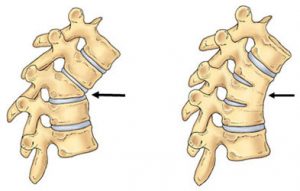The primary cause of congenital spine deformity
is the abnormal growth of the vertebrae of a fetus.
Congenital spine deformities are disorders of the spine that occur before birth and continue into childhood. The deformities originate from the improper development of the vertebrae (the bones that make up the spine) of the fetus and consequently, the child suffers from abnormal growth of the spine after birth.
There are commonly three types of congenital spine deformities depending on the direction and positioning of the irregular vertebrae:
- Scoliosis: curving or twisting of the spine to either side
- Kyphosis: uneven growth of the spine leading to a curved back
- Lordosis: inward curving of the spine causing lower back pain
What Causes Congenital Spine Deformity?
The primary cause of congenital spine deformity is the abnormal growth of the vertebrae (bones that make up the spinal column) of a fetus. Although, it is still uncertain as to what actually causes the vertebrae to grow irregularly.
There are three main reasons for the development of a spinal deformity:
- Partially developed vertebrae, that lead to the formation of an abnormal inward or outward curved spine.
- Joined or unsegmented vertebrae that can cause the spine to develop in an unnatural direction.
- A combination of partially developed vertebrae and unsegmented vertebrae can also occur in some cases.
What Are the Symptoms of Congenital Spine Deformity?
Usually, a medical practitioner can detect congenital spine deformities at birth through routine examinations, however, sometimes the symptoms may not be that prominent until a later age. Some of the symptoms that worsen over time are:
- Difficulty breathing
- Uneven development of the shoulders, waistline, hips or legs
- Abnormal shape or curvature of the back, either sideways,
orforward or backward - Abnormal bowel movements
- Organ development disorders
How Are Congenital Spine Deformities Diagnosed?
In most cases, a doctor will be able to diagnose a congenital spine disorder through a physical exam immediately after birth or in a follow-up examination. In some cases, a spinal deformity can be detected while still in the uterus through an ultrasound.
However, further testing may be required to get in-depth and accurate information about the deformities. These tests include:
- X-rays to identify the deformed vertebrae and the type of deformity
- CT scans, ultrasounds, and MRIs to check for organ development issues and spinal cord health
What Are the Treatments for Congenital Spine Deformities?
Treatments for congenital spine deformities are focused on controlling the abnormal growth of the vertebrae and preventing the deformities from getting worse. The treatment also depends on the severity of the situation.
- Braces or casts: In some mild forms of spinal deformity, particularly scoliosis, braces are placed to control the abnormal development of the spine and prevent further worsening of the curvature.
Surgery: In severe cases, the only option is to remove or modify the vertebrae through a technique called spinal fusion. This procedure may be followed by additional surgeries at a later point in time, especially for growing children.


